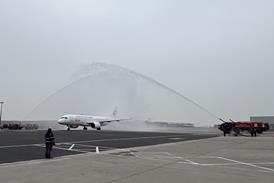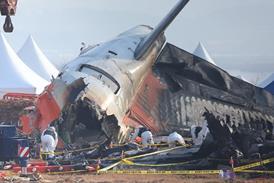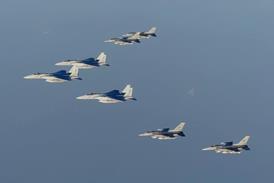European researchers are preparing a series of ground and flight tests to asses the viability of using fuel-saving hybrid laminar-flow technology on future large aircraft.
Part of the EU-funded Clean Sky 2 research programme, the project largely be focused on the development and ground testing of two hybrid laminar-flow control (HLFC) demonstrators.
One will be dedicated to the use of HLFC technology in horizontal stabilisers, with the aim of achieving a fully functional leading-edge segment at technology readiness level (TRL) 6. The other, meanwhile, will be a "large-scale" demonstrator of HLFC technology that could be employed in wings, at TRL4, says Clean Sky.
For the flight tests, the team will reuse HLFC equipment previously assessed on the vertical stabiliser of an Airbus A320 test aircraft belonging to German aerospace research centre DLR in 2018 as part of Clean Sky's AFLoNext project.
Clean Sky says the planned test effort – scheduled to take place later this year and in 2020 – is aimed at acquiring "data in specific flight conditions and representative of airline operations".
Hybrid laminar flow involves artificially generating an area of low air pressure underneath a perforated leading edge to stabilise the laminar flow. The area of low pressure can be created either via a motorised pump in an active HLFC system or, passively, by aerodynamically creating low-pressure air elsewhere on the aircraft.
Under a separate effort – the Breakthrough Laminar Aircraft Demonstrator in Europe (BLADE) project – Airbus and other research partners have assessed, on a modified A340, natural laminar flow, which is entirely generated by the aerofoil shape and surface properties.
But that effect is limited to aerofoils with relatively low sweep angles and therefore low air speeds; it is not suitable for long-haul aircraft that typically cruise faster than short-haul types.
Noting that Boeing has implemented a HLFC system on the 787's empennage, Clean Sky says the project's primary objective is to find a solution "either on the fin or on the horizontal tailplane", potentially generating fuel-burn savings of 0.5%.
"Half a percent might not sound substantial, but the bigger objective of the project is to demonstrate the potential of the technology," says Clean Sky.
Airbus is a participant in the HLFC effort. Its Clean Sky 2 technical leader Xavier Hue states: "If you implement this everywhere on the wing and on the horizontal tailplane and the vertical tailplane, you could gain up to 10% in fuel efficiency."
While the project is aimed at finding technical solutions, a wider objective is to determine whether it can be deployed in typical airline operations and if manufacturers can incorporate the technology in high-volume production at "acceptable cost".
Clean Sky large passenger aircraft project officer Sebastien Dubois states: "If we want to benefit from… such a solution, we need to assess and process all the potential adverse elements, such as constraints of cleaning, constraints of operation, potential failures that could occur in operation… This could lead to the decision to implement – or even not to implement – such a solution."
Source: FlightGlobal.com


























